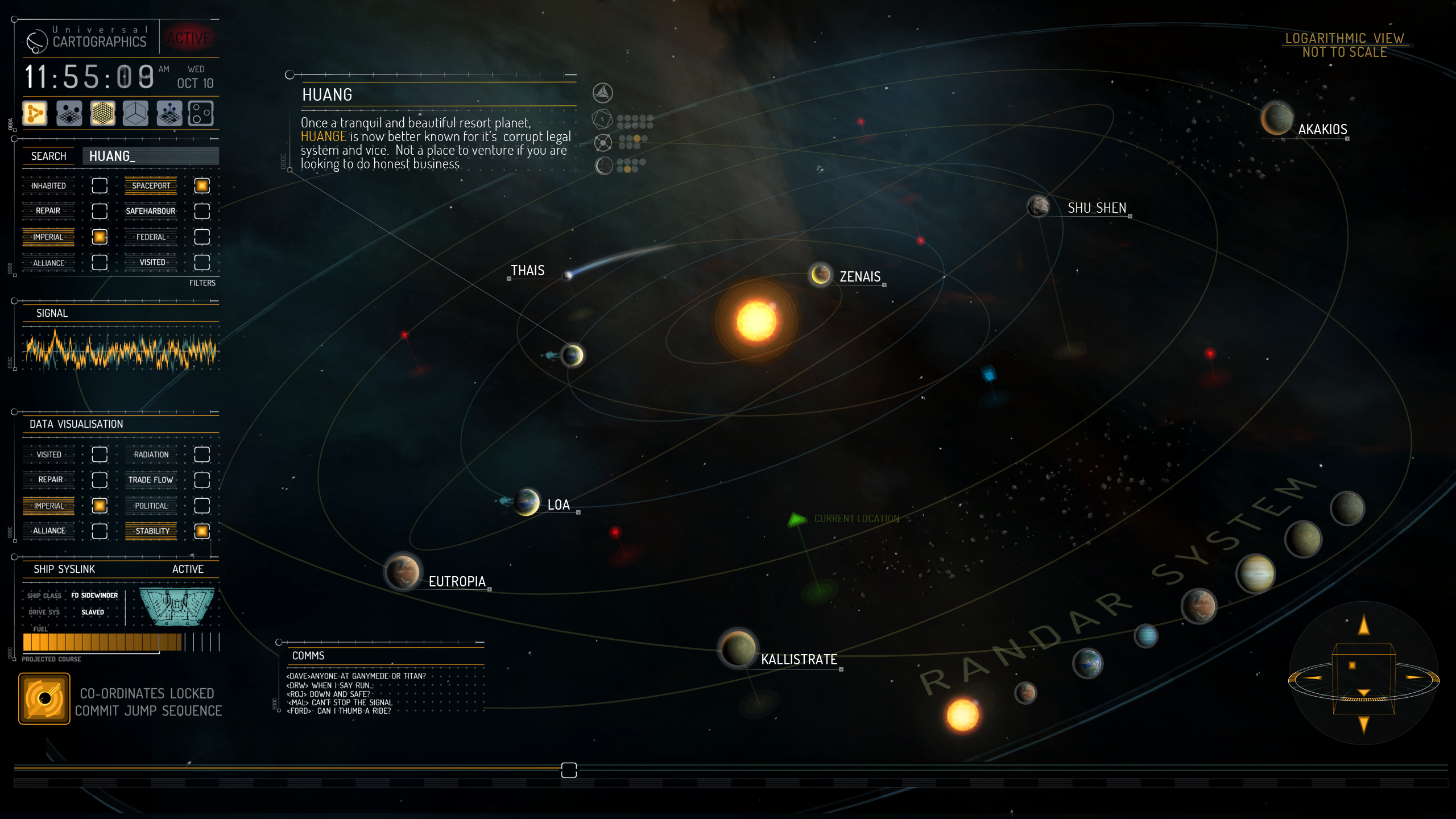Planetary brightness at long distance
The main complaint I have is that during supercruise you have it locked but there is not even a white dot or something indicating that it is a body. Basically planets and moons don't even exist until you get close enough, it just puts the entire body into it. Before then it should be as bright as any star in the sky at the time. Possibly sticking out and "feeling" closer than the others.
There is no comparison between the planetary body vs the skybox at all until you get close. Once you get close its awesome but before then, you don't even see anything.
Like if I'm supercruising to a target and what if I'm passing something interesting and want to divert. Right now you have no idea ANYTHING except the sun is out there and the target you've selected.
I just wanted to add my voice to this and the original post, since I'd noticed the same. I agree that planets should be visible (but star-like) without any HUD indicators from at least several hundred light-seconds away, depending on the planet's size, albedo, and the phase of the planet as observed from your current location. From Earth, we can easily see Mercury, Venus, Mars, Jupiter and Saturn with the naked eye, with Venus and Jupiter often appearing as bright as (or brighter than) the brightest stars.
Stellarium shows this effect very well.
Yes, the planets in Elite: Dangerous are awesome when viewed up close, but it does feel wrong that there's currently no unaided visual indication of anything there from even a moderate distance, until close enough to show a disc. When arriving in a system from hyperspace, virtually every planet in the system should look like one of the stars in the backdrop: They will all be fully illuminated by the central star when viewed from there, so should appear fairly bright, especially the bigger/closer ones. Conversely, if the planet is almost between the central star and the observer, it should reflect almost no light. Some angle in between would give an intermediate brightness.
As an example, the Hathor gas giant in the Dahan system is currently invisible even at 200 light-seconds, when approaching with the sun behind. 1 AU is about 500 ls. Jupiter and Saturn are easily visible as bright points of light from Earth at about 5 and 10 AU (about 2500 and 5000 ls) respectively.
If implemented well, I think this could also be a great exploration mechanic to allow us to discover unknown planets in uncharted systems at relatively long range (which presumably wouldn't be shown on the HUD?). Engaging super-cruise and keeping our eyes peeled for any star-like planets that move or change brightness against the galactic backdrop would allow us to find them even without using instruments. (After all, watching planetary motions is how the planets in our own solar system were discovered millennia ago!)
TL;DR: "Planet" comes from the ancient Greek for "wandering star," and I really hope that planetary brightness will be represented properly at long distance, particularly for those who enjoy exploration. Perhaps I'm worrying about nothing and this is planned for a later release, anyway. Everything else so far (especially the galactic map and backdrop!) is stunning - great work Frontier!


